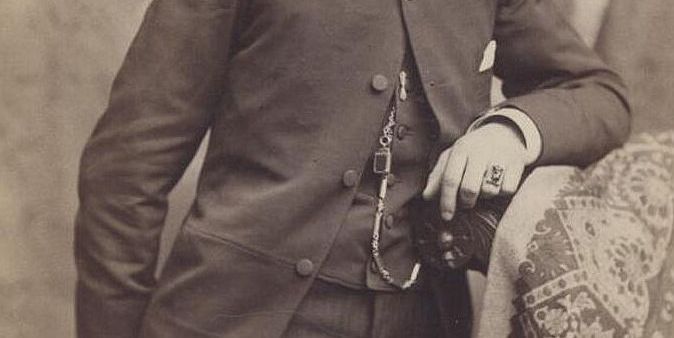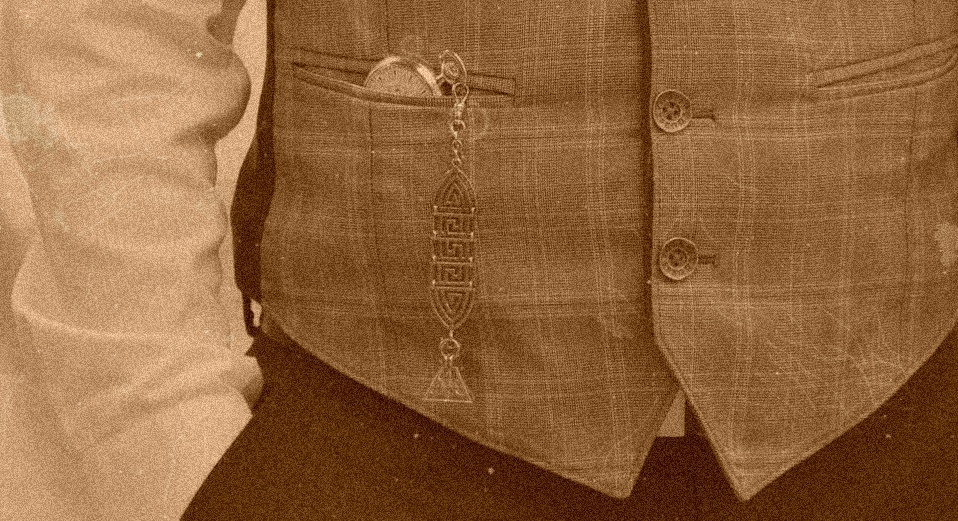
Patrik Pařízek, a curator at the National Technical Museum, is a specialist in the artistic craftsmanship of historical clocks. So specialised, in fact, he had to search for a Czech university that would let him pursue a doctorate on the subject. I spoke with him shortly after the opening of a special exhibition he is curating at the Museum of the Czech Karst in Beroun, called “A soul full of clockworks”, featuring a wide array of rare mechanical toys and automatronic objects.
Just short of a year ago, Patrik Pařízek opened an antique shop in central Prague – the Clock Gallery – where he sells and repairs historic timepieces and the odd mechanical instrument, musicbox. I began by asking him when his fascination with clocks began, and about the very first one that he took apart.
“When I was very young, I was visiting my grandmother and I alone with an old alarm clock in the living room and I tried to take it apart. Of course, I totally destroyed it – the spring jumped from the case. It was unrepairable, unusable. Now, I can say that it was quite a collectors’ piece because I have a different [trained] eye.
What made that one special?
“That one was special because it got an award at an international expo for Czechoslovak design. It was quite an extraordinary shape, very modern. And now, such objects can sell for a couple thousand crowns.”
Patrik Pařízek is a PhD student in the Department of Art History at Palacky University in Olomouc, where he researches the artistry of historical clocks, including sundials — his main interest apart from mechanical music machines. Besides being a curator and an antique shop owner, he is of course also an avid collector.
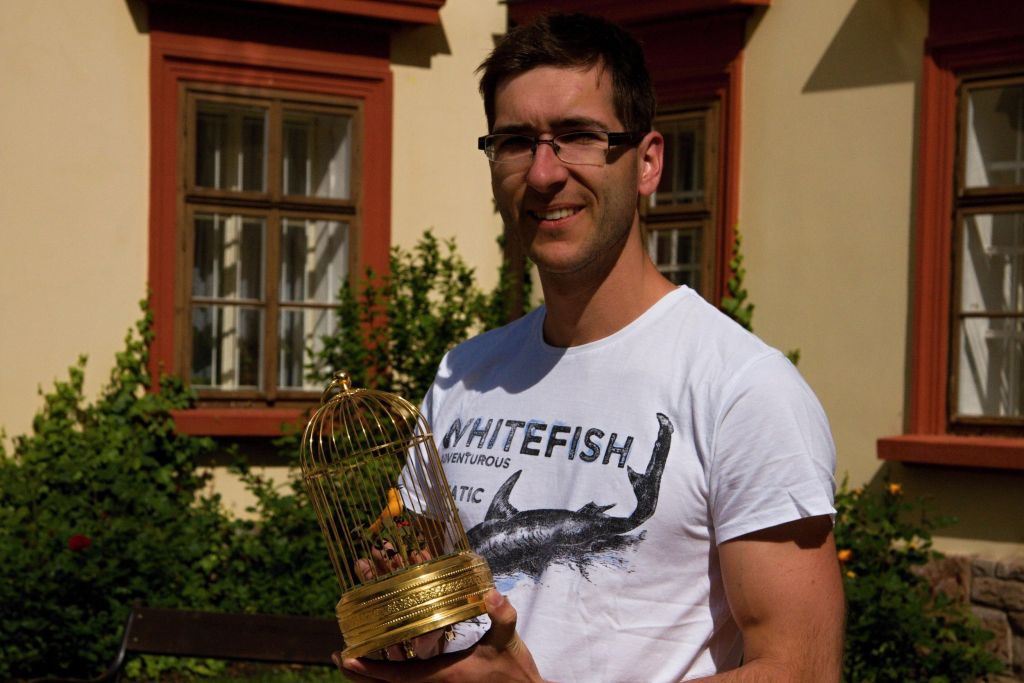
“At first, I was visiting some flea markets, tried to buy some things online or at some smaller stores. But quite often, the seller knows what he wants to sell and mostly they were not such quality items. For example they say, ‘Just now, I don’t have the key, but it’s fully working’, or, another typical sentence, ‘Of course it works, but we don’t have time to try it.’
“I found that it was best to be in touch just with collectors because in the Czech Republic they often have quite large collections and sometimes they have more pieces of similar items so they are ready to sell it, and we can clean it put it in our shop.”
So, you built up a practical expertise – and also an academic one.
“Yes, I connected it to my PhD studies at the university in Olomouc with a focus on the history of clocks. It’s quite unusual.”
Well, if you’ll pardon the pun, I have time to hear the story.
“It’s quite extraordinary because it’s not typical to study this field. I first tried [Charles University] in Prague and [the University of West Bohemia] in Pilsen but they told me they had no experts in this field; we cannot give you lessons.
“But in Olomouc, they were quite open to it. Firstly, I had to find many other people from the field to give me advice in cooperation with the university because of course they had no experts in clock history but there were experts for related fields.”
And more within the framework of mechanical history?
“More within the framework of the history of art – I mostly focused on the types of cases and decorations and historical styles.”
Apart from clocks, you grew interested in different kinds of mechanisms – for example, we met at a festival of street organ grinders – or flašinets in Czech.
“Yes, there’s quite a close connection between clocks and music because with many clocks which are more valuable, more special, more rare there is quite often some kind of musical machine inside. We have flute clocks, reed music machines.
“Thanks to this, I was searching for some restorer of some part of the clock and got in touch with Mr Bondra, who is the president of the Czech society of barrel organ players.”
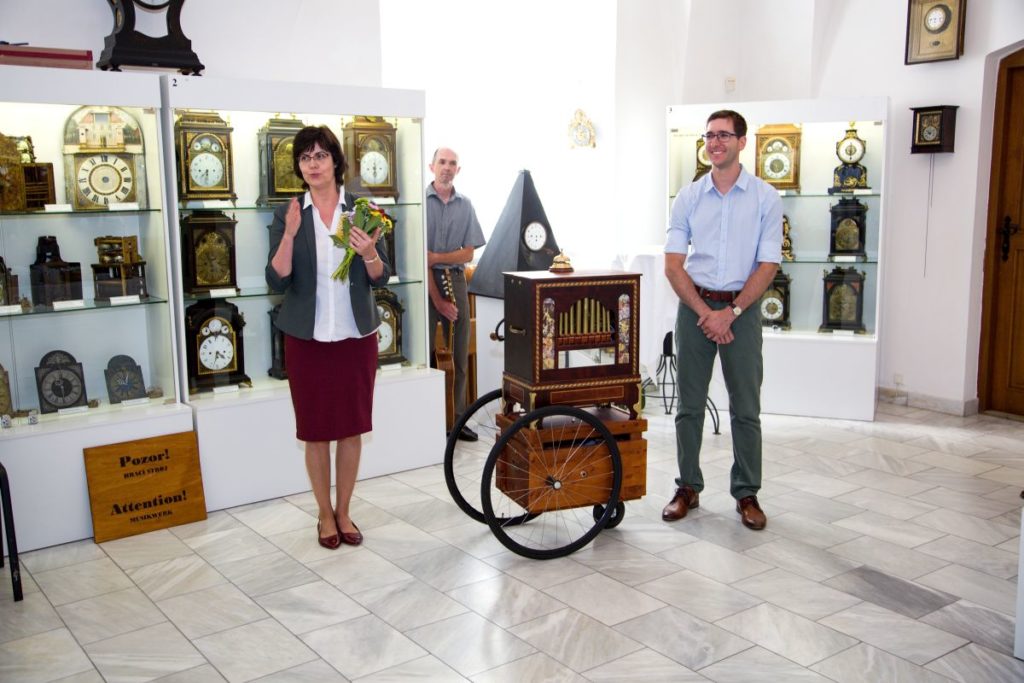
Patrik Pařízek is himself a barrel organ player and a card-carrying member of the Czech Association of Friends of the Flašinet and Mechanical Music. He also works for the National Technical Museum, where the work he does is a bit outside his main interests.
“It’s a bit different field because I’m the curator for mechanical engineering – we have quite a nice collection of steam machines and other types of engines that came later.”
Let’s turn to your own, latest exhibition, the name of which loosely translates in English as a ‘soul full of wheels’. How did that come about, what’s on display?
“I have been fascinated with mechanical toys, automatronic objects. Many of them people will know from their childhoods. But these kinds of toys are not just for children – we have different luxury ones for adults. Again, the typical ones correspond to antique clocks, in which we will find many moving figures, for example a blacksmith working on an anvil.
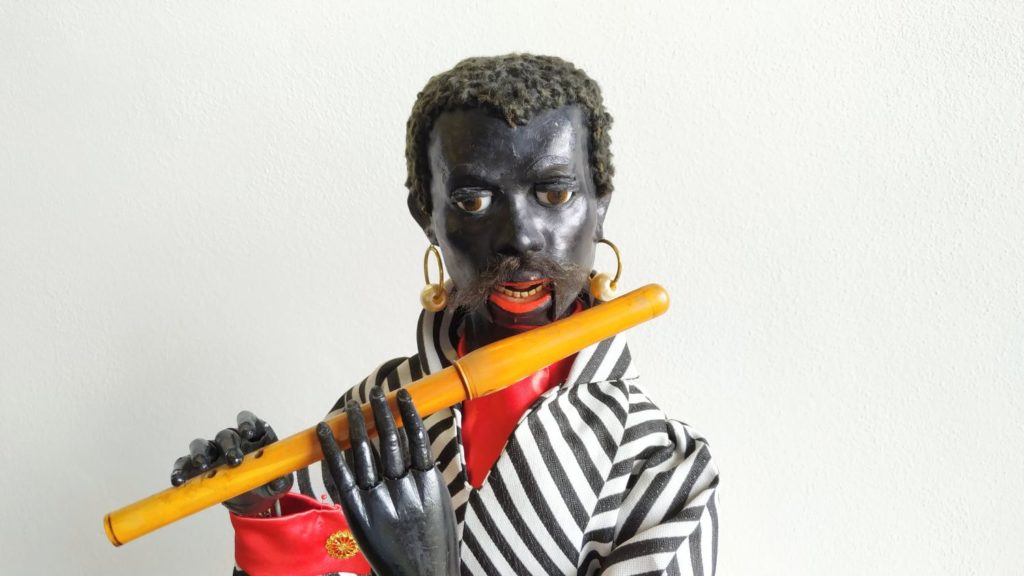
“But when organising the exhibition, thanks to my job in the National Technical Museum, we started cooperating with the [Museum of the Bohemian Karst] in Beroun, where the exhibition is located. And we were able to borrow some of the most rare, most valuable objects it is possible to see in this country. The items comes from all over the country, some from museums but many from private collectors.”
Among the rarest items now on display at the Museum of the Bohemian Karst is a street barrel organ featuring a band of monkey musicians.
“I think it’s the most valuable item in the exhibition. It’s part of a classical barrel organ, underneath which is a glass box with these six musicians. When you are playing the organ, each musician in the band can make around six moves. They are moving their heads, mouth and eyes and playing their instruments – the bass, violin and a cello.
“It’s the most popular object in the exhibition. It’s from the 19th or early 20th century and was made in Switzerland, I think, but we can’t say exactly because many were made in workshops in central Europe. It’s not possible to identify from the techniques of how it was made.
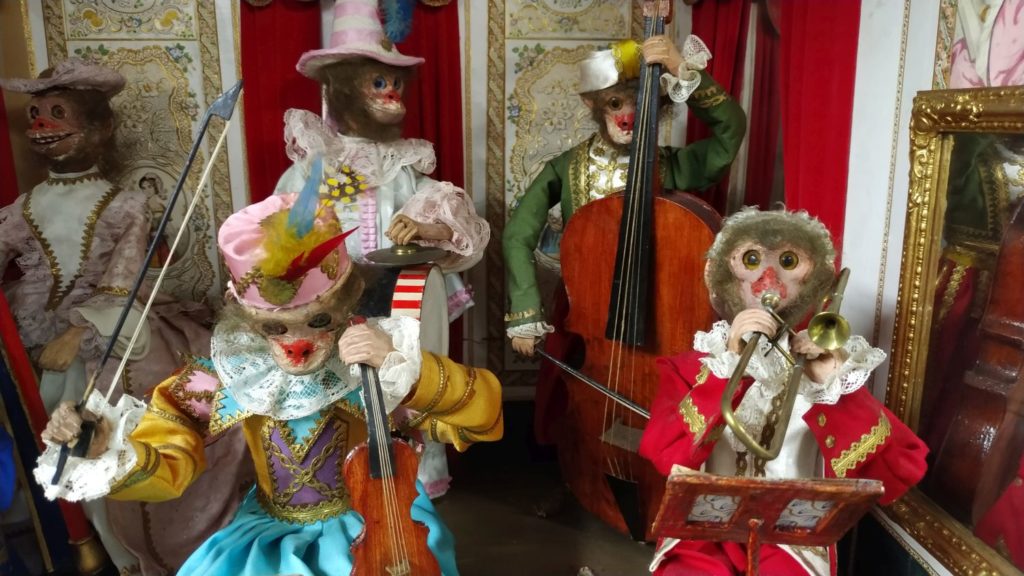
“We made a video of how it moves because it’s impossible to show to people every day. So we made a detailed video about each figure on it. Children are fascinated by what people back then were able to make. It’s from the National Technical Museum. It’s the one object well known in the Czech Republic.”
And what else do we have – this one under a tree looks like a shepherd…
“Yes, it’s a shepherd from an old mechanical Bethlehem (Betlém). It was typical around our country during the winter in the mountains that many people making them, and many could move, which was more popular with visitors. This example is from Liberec.”
So, it is part of a Nativity scene…
“Yes, and this is just one part. Each figure has a separate mechanism, makes a different movement, and each one is quite complicated. For example, we have from this Bethlehem scene, we also have moving pigeons and cows. We have six cows and I don’t know how many pigeons. But when you look under the grass, there is such a complicated mechanism, it’s unbelievable how they could do it. What’s more, they made it from wood, mostly.”
“Here’s another item – a man sitting on a latrine. It was a shooting target from an old fairground. It was made around 1910 and it’s quite funny. When the target is shot by a rifle, under the man there is moving… Well, what’s a polite word?”
Right, so, now who is this fellow? He’s got a very expressive face.
“This is an example of a Black Forest clock from Germany. Each one has something special to make it more valuable on the market. Here we see on the upper top of the dial a man with moving eyes and mouth. Every hour, when the clock strikes, he opens his mouth the same number of times as the strikes.”
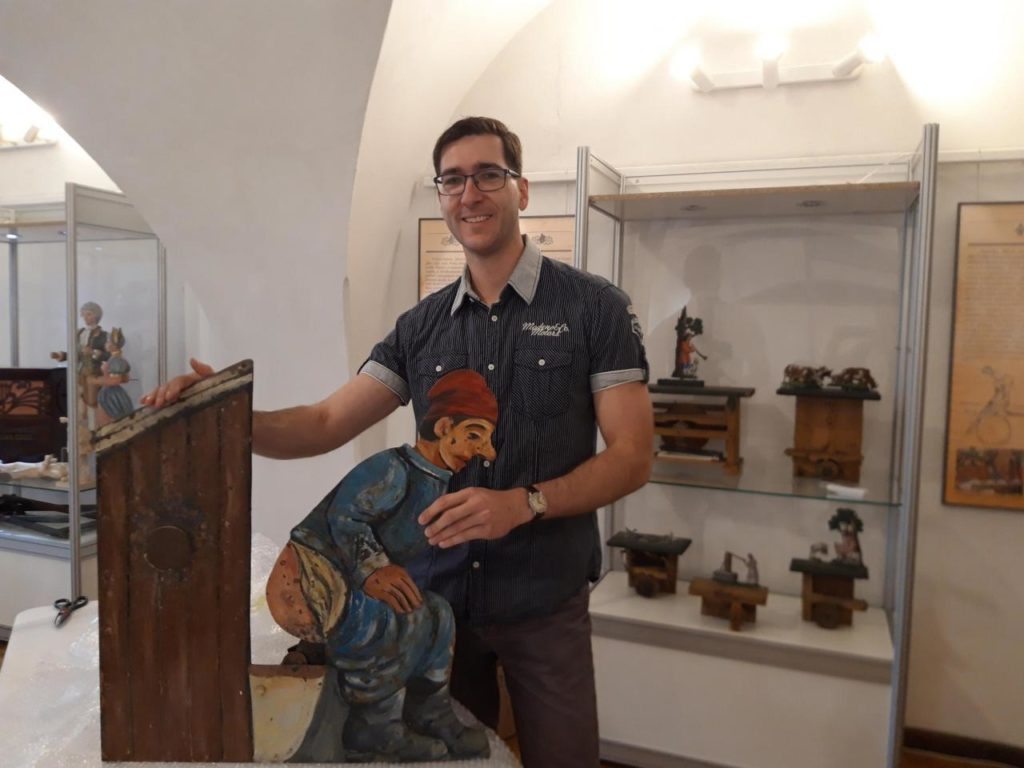
“Altogether, there are 10 groups from different fields and about 50 or 60 pieces. The largest is a horse we borrowed from the National Technical Museum, from the Letenský kolotoč (Letná Park Carousel), which has 21 horses inside. It is the oldest such carousel in the world.
“It was made with a special technique where they used the whole hide from a horse and stretched it over a wooden sculpture, to make it more realistic. It was built in 1892 as is a quite rare object. Firstly, when the carousel was new, there was a man walking around underneath turning it by hand cranks.”
Curator Patrik Pařízek has a few other projects in development. One he is most excited about is a lecture and workshop series that he and his partner at the Clock Gallery in Prague plan to hold in August, where participants can try their hand at restoring timepieces.

And you envision the people would all work on the same restoration, or would they bring in clocks that their grandchild also destroyed?
“I think they will bring the items. Because many people are visiting us, asking for advice – is this valuable, or not? What can I do with it?”
Patrik Pařízek has been leading courses about antiques at the Mozarteum Academy and art history lessons at the Secondary Pedagogical School in Beroun since 2017. He has been working at the National Technical Museum in Prague, where he is now curator of its engineering collections, since 2018. He opened the Clock Gallery antique shop last year.






































































